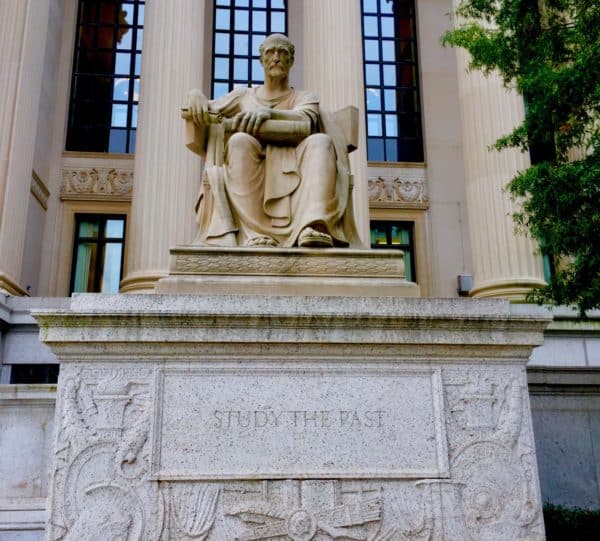[Originally Published in Crowdfund Insider on November 6, 2017]

As a securities lawyer and a sometimes advocate for smart regulation of capital formation, I must confess: When it comes to addressing the current state of the Initial Coin Offering (ICO) marketplace, I believe that market participants face a crisis of growing proportions. No Hype needed here – headlines of all sorts populate the Internet on a daily – if not hourly – basis.
The crisis I see is not necessarily the dearth of government regulation. Rather it is the degree of uncertainty in our existing regulatory structure. When it comes to the role of the SEC, there is too much uncertainty – and a vacuum of public pronouncements of any use to market participants who wish this ship to float – and not sink. More on this below.
Thus far, it seems that only the crooks are attracting much regulatory attention. Yes, enforcement is important – and there is a natural tendency towards going after the low hanging fruit – the obvious (and perhaps the not so obvious) frauds. But as far as providing regulatory guidance to market participants, the SEC has thus far fallen flat – at least based upon their public pronouncements to date.
 This inaction is understandable. We are dealing with extremely difficult “facts and circumstances” legal issues, in an area that is both fast moving and complex – so much so that this burgeoning world of “crypto” currency might more aptly be named “cryptic” currency. But the price of inaction I believe is a costly one.
This inaction is understandable. We are dealing with extremely difficult “facts and circumstances” legal issues, in an area that is both fast moving and complex – so much so that this burgeoning world of “crypto” currency might more aptly be named “cryptic” currency. But the price of inaction I believe is a costly one.
Vast sums of money are flowing into the ICO marketplace – real dollars into the billions –which can be put to good use to create measurable value added in the US economy – accelerate the development and utilization of groundbreaking technology – and jobs. But legitimate market participants abhor regulatory uncertainty.
A gating issue, such as whether an ICO involves a “security” – subjecting it to SEC regulation – is not a simple one. And taking the wrong path carries with it serious consequences – starting with a free investor “put” under the Securities Act of 1933 if security ICOs are sold to the public without first registering the offering or conducting it under an exemption from registration – a “put” which could bring an ICO issuer (and offering participants) down before it has the opportunity to get up and running. Simply put, after your ICO “party” you could find yourself in triage in the ICU (intensive care unit).
And there is a second, often overlooked gating issue. If your ICO involves an “equity security” (not the same as mere “security”), and you are lucky enough to raise over $10 million and attract thousands of token owners, the issuer will be required to register under another US securities law, the Securities Exchange Act of 1934, after the ICO closes, and forever be required to file 10-Ks and 10-Qs with the SEC (or face potentially draconian penalties for failing to do so).
So How are Marketplace Participants Handling the Regulatory Uncertainty?
Well, as best they can, given the current uncertainty in US securities laws and the, thus far, muted pronouncements of the Commission on this subject. And let me say at the outset, my hat is off to the brave pioneers in this area. But I am also reminded of the Biblical Moses – who wandered in the desert for 40 years in search of the Promised Land – but never lived to see it.
 Two of the early pioneers in this area are FileCoin, counseled by the Cooley law firm, and Cappasity, counseled by DLA Piper – legal powerhouses to be sure. Both followed a similar approach in structuring their ICO “pre-sales.” And both appeared to share the same opinion as to whether the underlying “tokens” were securities. Let’s take a closer look.
Two of the early pioneers in this area are FileCoin, counseled by the Cooley law firm, and Cappasity, counseled by DLA Piper – legal powerhouses to be sure. Both followed a similar approach in structuring their ICO “pre-sales.” And both appeared to share the same opinion as to whether the underlying “tokens” were securities. Let’s take a closer look.
Each of these offerings involved the sale of a security referred to as a SAFT – Simple Agreement for Future Tokens. The SAFT represents the right to purchase, at a discount, tokens to be issued in the future upon the launch of the issuer’s network. Each of these issuers treated the SAFT as a security, and sold the SAFTs under one of the new JOBS Act exemptions, Rule 506(c), which allows companies to escape registration, but solicit publicly, by limiting the purchasers to verified high net worth (accredited) investors. But each of these issuers opined that the tokens themselves, when later issued and sold to the public, would not be offered and sold as “securities.” Hence, no need to register the token’s offer or saleto the (non-accredited) general pubic when the network launches. And no need to become a fully reporting issuer under the Securities Exchange Act of 1934.
The FileCoin offering was interesting in that not only did it create the obligatory “White Paper” immediately preceding its offering, but its counsel, the Cooley firm, launched a now widely circulated White Paper of its own on the heels of the completion of the FileCoin ICO. The ostensible purpose of the Cooley White Paper was to propose a path forward toward regulatorily compliant ICOs. In simple terms, Cooley posited that the SAFT itself is a security (not very controversial, in my opinion), but the tokens are not securities. In their words:
“The SAFT is a security. It demands compliance with the securities laws. The resulting tokens, however, are already functional, and need not be securities under the Howey test.”
So what is the “Howey” test, you ask? That is the name of the first US Supreme Court case, decades ago, to address the issue of what is a “security” for purposes of determining the applicability of federal securities laws. In simple terms, in order for an instrument to be a security, it must satisfy four criteria:
The Howey test:
- an investment of money
- in a common enterprise
- with the expectation of profit
- that comes significantly from the efforts of others
So what was the basis of the Cooley opinion that utility tokens are not “securities”:
“To be sure, public purchasers may still be profit-motivated when they buy a post-SAFT utility token. Unlike a pre-functional token, though, whose market value is determined predominantly by the efforts of the sellers in imbuing the tokens with functionality, a genuinely functional token’s value is determined by a variety of market factors, the aggregate impact of which likely predominates the “efforts of others.” Sellers of already functional tokens have likely already expended the “essential” managerial efforts that might otherwise satisfy the Howey test.”
Hence, Cooley concludes that “genuinely functional tokens” do not satisfy the fourth prong of the Howey test and, therefore, are not securities. As discussed below, there is a growing chorus of opinions in recent weeks which do not buy off on this analysis.
The Cappasity SAFT ICO
The Cappasity ICO followed shortly after the FileCoin offering, reportedly counseled by legal powerhouse DLA Piper. As with the FileCoin offering, the Cappasity ICO offering, of SAFTs, was accompanied by a Private Placement Memorandum, replete with the usual “Risk Factors” disclosures – 26 to be precise. And guess what was the first risk presented in the PPM:
“ARTokens may be considered securities in various jurisdictions.”
There is a substantial risk that in numerous jurisdictions, including the United States, ARTokens may be deemed to be a security. ARTokens issued on conversion of SAFT will have current use and functionality on an existing Platform. However, it is possible that securities regulatory authorities or plaintiffs lawyers may assert that the ARTokens inherently involve investment features that should be regulated by the securities, investment or similar laws. Such regulation may result in restrictions or other limitations applicable to the holder.”
And whose responsibility is it to make this determination? According to the Cappasity PPM, YOU, the investor:
“Every user, purchaser, and holder of ARToken is required to make diligent inquiry into determine if the acquisition, possession and transfer of ARTokens is legal in its jurisdiction and to comply with all applicable laws.”
OK, so now I am sitting in the shoes of a prospective investor, reading this? What am I supposed to think? Regulatory compliance is my responsibility? Not so fast.
But Wait, there is More!
A prospective investor who bothers to carefully read the second risk factor may conclude, as I did, that Cappasity is now not only (understandably) unsure of the applicability of US securities laws to the sale of its tokens, but now seems to be talking out of both sides of its mouth (as lawyers often are accused of doing) on yet another gray area in US securities laws: whether an issuer of these tokens is subject to becoming a fully reporting issuer following the completion of a successful ICO.
Here is Cappasity Risk Factor Number 2:
“The Offering may result in a requirement that Cappasity register its SAFTs or ARTokens as securities under the Securities Exchange Act of 1934, as amended, depending on its level of assets, its number of holders, and whether the SAFTs and ARTokens are considered equity securities.
Cappasity believes that ARTokens, when issued on conversion of the SAFTs, will be utility tokens and not securities (equity or otherwise), but there is no clear guidance from the SEC on this point.” [emphasis added]
Notice the schizophrenic disclosure on this one. The bold heading says that the tokens “may” be subject to registration under the 1934 Act. Yet in the first sentence of the narrative which follows, Cappasity now tells us that they “believe” that the tokens will not be securities. The reason for this ambiguity perhaps explained by Cappasity in the same sentence: “there is no clear guidance from the SEC on this point.”

So Why Does Any of This Matter?
So perhaps some of you readers are thinking that, well, maybe there is “safety in numbers.” If we simply move in lockstep behind first movers, with outsized law firms, we can weather this regulatory storm. Well, think again.
All us mortal securities lawyers can do in this area is make our best judgments, often based upon unique facts and circumstances, and after a careful study of the law. But what if we are wrong – and who will make that determination? Unless your offering is a screaming fraud, this determination will likely only be made if the token plummets in value. An ICO issuer and its offering participants may then be met with what Cappasity, in their Risk Factor No. 1, euphemistically refers to as “plaintiffs lawyers,” stating that they “may assert that the ARTokens inherently involve investment features that should be regulated by the securities, investment or similar laws. Such regulation may result in restrictions or other limitations applicable to the holder.”
Well, if that were the only risk that investors faced, restrictions applicable to the “holder,” I wouldn’t be writing this article.
A bigger risk is that these “plaintiffs lawyers” could bring the entire house (network) down, before (or after) the actual “launch” – leaving the investor holding the proverbial bag. That is because the penalty for failure of an issuer to comply with federal securities registration provisions is a court enforced “put” by the investor to get his money back (in US dollars) – which means money flowing out of the hands of entrepreneurs – though perhaps not as quickly as it flowed in. And off course, none of this news would bode well for the token’s secondary market.
So How Real is this Risk?
Go ask the folks at Tezos, who recently completed an ICO raising hundreds of millions of dollars. When token valuations plummeted, the plaintiffs lawyers came knocking at (as in “ran to”) the courthouse door, in the form of a purported class action complaint against the company, its management and market participants. Plaintiffs showing up in court often tend to be seen as sympathetic creatures, having lost money in an often failed enterprise. Under these circumstances judges are unlikely to look solely to legal White Papers as they carve a path to justice.
Case in Point: The Recent Prometheum SEC No Action Ruling Request
When it comes to the applicability of US securities laws, there is no dearth of expert opinions. Not all of these opinions come down on the side of FileCoin and Cappasity, or the Cooley White Paper, when it comes to the issue of whether a token, utility or otherwise, is a security (or an equity security). A recent example is a ruling request submitted by an issuer, Prometheum, to the SEC in October 2017. It did not expressly request a ruling on the issue of whether a “token” is, more often than not, a “security,” Nonetheless, the Prometheum No Action ruling request is noteworthy in that it appears to express a point of view diametrically opposed to the one taken in the Cooley White Paper – as to the fourth factor in the Howey test – the significance of the contributions of the efforts of management once an ICO issuer’s network is up and running.
Opining that “the overwhelming majority of ICO tokens are securities under the Howey test”, Prometheum’s counsel cuts to the chase and appears to part company with the Cooley White Paper – addressing the most controversial (and ambiguous) element of the Howey test – the significance of managerial efforts:
“The ICO issuer uses the funds raised in the ICO to build out the network, with the goal of increasing the underlying network’s usage. Increased network usage increases the demand for the token thereby increasing the ICO Token’s value. Thereafter, the ICO network’s supporting software engineers and operators continuously engage in managerial efforts by continually developing and watching the network and making changes as needed for the ICO network to function.”
They may have a point. After all, even blockchain driven networks do not necessarily, in practice, run themselves. I leave that one to the computer science geeks – at least for now.
 Others in the securities bar appear to have reached a conclusion similar to Prometheum’s counsel, albeit perhaps for different or additional reasons. Of note, my good friend and highly respected colleague, Doug Ellenoff, of Ellenoff, Grossman & Schole, has recently weighed in on the pages of Crowdfund Insider:
Others in the securities bar appear to have reached a conclusion similar to Prometheum’s counsel, albeit perhaps for different or additional reasons. Of note, my good friend and highly respected colleague, Doug Ellenoff, of Ellenoff, Grossman & Schole, has recently weighed in on the pages of Crowdfund Insider:
“We have reviewed the applicable case law and published memos by law firms, spoken with numerous regulators, industry participants and professionals, attended a variety of crypto/blockchain and engineering conferences, lectures, read source materials, including books and white papers on the subject, and in the end [we] believe that there seems to be very little light to make a convincing argument that a token isn’t subject to existing regulatory oversight by the SEC, other Foreign regulatory authorities, State Securities Agencies or CFTC.”
Mr. Ellenoff also notes the inherent uncertainty with respect to utility tokens generally, remarking “even utility tokens, arguably have many equity-like characteristics (or are investment contracts),”
And where do I stand? I lean towards the Ellenoff view of the world. In a close case, or gray area, I expect that regulators and courts will come down more often than not on the side of tokens being regulated securities, driven by big picture policy concerns and sympathetic plaintiffs. And in my view the gray area is pretty large compared to the black and white.
And who exactly is Prometheum you might ask? Well, I suggest you check out their recent SEC filing, seeking to qualify their ICO (for Warrants – not SAFTS) under Regulation A to find some answers.
Washington: We Have a Problem!
 As I stated at the beginning of this article, as far as providing meaningful regulatory guidance to ICO market participants, the SEC has thus far fallen flat – at least based upon their public pronouncements to date. Apart from the periodic warnings of SEC enforcement actions and questionable marketing practices, there has been no real guidance as to how compliance-minded issuers can minimize the risk of lawsuits or enforcement actions. Compliance-minded, responsible market participants, such as investment banker Tim Draper and StartEngine CEO and founder Howard Marks, have also called upon the SEC to come up with further guidance to the ICO marketplace following the SEC’s July 2017 pronouncements. I too join my concerns and voice with them and other like minded market participants.
As I stated at the beginning of this article, as far as providing meaningful regulatory guidance to ICO market participants, the SEC has thus far fallen flat – at least based upon their public pronouncements to date. Apart from the periodic warnings of SEC enforcement actions and questionable marketing practices, there has been no real guidance as to how compliance-minded issuers can minimize the risk of lawsuits or enforcement actions. Compliance-minded, responsible market participants, such as investment banker Tim Draper and StartEngine CEO and founder Howard Marks, have also called upon the SEC to come up with further guidance to the ICO marketplace following the SEC’s July 2017 pronouncements. I too join my concerns and voice with them and other like minded market participants.
The Commission’s July 2017 DAO Release was a good start, as a wakeup call to the ICO marketplace, but it did little or nothing to shed light on important and complex securities law compliance issues. The solution proposed by the SEC’s Divisions of Enforcement and Corporation Finance in a companion Release had this to say:
Consultation with Securities Counsel and the Staff
“Although some of the detailed aspects of the federal securities laws and regulations embody more traditional forms of offerings or corporate organizations, these laws have a principles-based framework that can readily adapt to new types of technologies for creating and distributing securities. We encourage market participants who are employing new technologies to form investment vehicles or distribute investment opportunities to consult with securities counsel to aid in their analysis of these issues and to contact our staff, as needed, for assistance in analyzing the application of the federal securities laws. In particular, staff providing assistance on these matters can be reached at FinTech@sec.gov.”
So how has that been working out, to calm the unsettled regulatory waters? Judging by anecdotal evidence, not very well. One inquiring ICO issuer was, essentially, referred by the SEC Staff to the Howey test and told to consult further with his securities counsel.
My own recent experience, as a seasoned securities lawyer on behalf of an ICO issuer of utility tokens, did not fare much better. Yes, I prepared a detailed written analysis of my client’s “facts and circumstances,” and dutifully directed it to the SEC Staff at FinTech@sec.gov. The Staffer who eventually responded to my inquiry was thoroughly knowledgeable. Yet in the end, he was unwilling to get into “facts and circumstances,” instead directing me to the same case law which I had already reviewed.
A Much Needed Path Forward for the SEC
 I obviously cannot speak for the SEC’s new Chair, Jay Clayton. But I can hope to influence thought – and perhaps successfully make the case that, as far as the jurisdiction of the SEC is concerned, we are in the midst of a crisis. And the answer is not simply general pronouncements or stepped up enforcement. What the ICO marketplace needs, at the very least, is detailed, authoritative guidance on some very basic securities issues. Failure to timely address these issues is certain to have significant economic consequences on the ICO market and its participants. These consequences include less availability of capital in these markets to fund further development and commercialization of blockchain based businesses and technology – and the movement of capital – and jobs – offshore.
I obviously cannot speak for the SEC’s new Chair, Jay Clayton. But I can hope to influence thought – and perhaps successfully make the case that, as far as the jurisdiction of the SEC is concerned, we are in the midst of a crisis. And the answer is not simply general pronouncements or stepped up enforcement. What the ICO marketplace needs, at the very least, is detailed, authoritative guidance on some very basic securities issues. Failure to timely address these issues is certain to have significant economic consequences on the ICO market and its participants. These consequences include less availability of capital in these markets to fund further development and commercialization of blockchain based businesses and technology – and the movement of capital – and jobs – offshore.
 Yes, perhaps the Commission could continue to punt on this one – under the guise of these issues calling for refined case by case legal analyses, by private lawyers – based upon individual “facts and circumstances.” But that, in my opinion, would be – for lack of a better word – a cop out. In the past the Commission has issued fairly detailed interpretive releases in other areas heavily dependent on multiple facts and circumstances, providing useful guidance to the public and the securities bar in the process.
Yes, perhaps the Commission could continue to punt on this one – under the guise of these issues calling for refined case by case legal analyses, by private lawyers – based upon individual “facts and circumstances.” But that, in my opinion, would be – for lack of a better word – a cop out. In the past the Commission has issued fairly detailed interpretive releases in other areas heavily dependent on multiple facts and circumstances, providing useful guidance to the public and the securities bar in the process.
Or perhaps, if one New York lawyer is correct, we are in the midst of an exuberant bubble, so the regulatory issues will soon fade away when the market collapses – leaving the Enforcement Division to pick up the pieces (as presented on November 4, 2017 in The New York Post):
“It’s the Wild West,” Joseph A. Hall, partner at Davis Polk, told The Post.
“It totally reminds me of the dot-com boom,” he added. “It’s exactly the same mentality as 20 years ago, and it will probably end the same way.”
Frankly, I prefer to let properly regulated markets decide how the ICO boom will end. There is a growing body of authority that this marketplace is not a passing fad – one that if properly regulated can be instrumental in capital formation and rapid economic growth. If this is indeed is a “party,” the regulatory “A Listers” have shown up in force. One highly respected former SEC Commissioner, Paul Atkins, has recently joined forces with an industry trade association. And his two time subordinate, former Commissioner Daniel M. Gallagher, has loaned his name and expertise to a privately held blockchain company, joining their Board of Directors.
 And from a regulatory perspective, the 2000 dot-com bubble was quite the opposite of the ICO market. Back then issuers were lining up at the SEC filing window to register their IPOs. Not so with ICOs. Many ICO issuers are looking for creative ways to (hopefully) skirt regulations and avoid compliance with SEC rules and registration. Others, looking for a regulatory compliant path – do not see a clear path forward.
And from a regulatory perspective, the 2000 dot-com bubble was quite the opposite of the ICO market. Back then issuers were lining up at the SEC filing window to register their IPOs. Not so with ICOs. Many ICO issuers are looking for creative ways to (hopefully) skirt regulations and avoid compliance with SEC rules and registration. Others, looking for a regulatory compliant path – do not see a clear path forward.
It is no solution for issuers and other market participants to simply seek cover behind securities lawyers, no matter how well qualified. Unlike H & R Block, if an issuer is hit by a lawsuit or regulatory action, its securities counsel will not accompany them “at no additional charge.” Nor can the most unassailable legal White Paper protect an issuer and others from a massive rescission suit by investors who turned out to be on the wrong side of the market. I would much prefer to have some authoritative views emanating from the SEC’s website to lean on. And by the way, that is exactly what the Plaintiff did in the Tezos class action – it attached the Commission’s July 2017 DAO release as Exhibit “A” to the Complaint.
I respectfully submit to you, Chair Clayton, that the voices of Tim Draper, Howard Marks and others are your “2:00 am” crisis call. We look to the leadership – and definitive action of the Commission – with the support and participation of ICO marketplace stakeholders. With billions of dollars pouring into these markets in a matter of months, the ICO “crowdsale” marketplace is clearly not your predecessors’ crowdfunding.
*********
Samuel S. Guzik, a Senior Contributor to Crowdfund Insider, is a corporate and securities attorney and business advisor with the law firm of Guzik & Associates, with more than 30 years of experience in private practice. Guzik is also former President and Board Chair of the Crowdfunding Professional Association (CfPA) and CfPA Legislative & Regulatory Special Counsel. A nationally recognized authority on the JOBS Act, including Regulation D private placements, investment crowdfunding and Regulation A+, he is and an advisor to legislators, researchers and private businesses, including crowdfunding issuers, service providers and platforms, on matters relating to the JOBS Act. As an advocate for small and medium sized business, he has engaged with major stakeholders in the ongoing post-JOBS Act reform, including legislators, industry advocates and federal and state securities regulators. In 2014, some of his speaking engagements have included leading a Crowdfunding Roundtable in Washington, DC sponsored by the U.S. Small Business Administration Office of Advocacy, a panelist at the MIT Sloan School of Business 2014 Crowdfunding Roundtable, and a panelist at a national bar association event which included private practitioners, investor advocates and officials of NASAA. His articles on JOBS Act issues, including two published in the Harvard Law School Forum on Corporate Governance and Financial Regulation, have also served as a basis for post-JOBS Act proposed legislation. Mr. Guzik was also instrumental in the passage of legislation in 2016 calling for the creation of an independent office of small business advocate at the SEC, and was the first person to advocate publicly for this legislation – on the pages of Crowdfund Insider.

